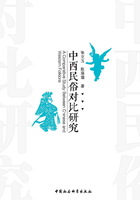
4. Comparisons
Chinese and Western people vary immensely on diet concerning the follow ing aspects:
(1)Staple Food
Chinese folks feed on rice and cooked wheaten food for thousands of years as the result of Chinese traditional agricultural-based economy, the supplements being cereals like maize, Kaoliang, grain and tuber crops. However, bread and potatoes are the major staple food for westerners. In addition, Chinese like eating vegetables whereas westerners favor meat very much.
(2)Food Temperature
To facilitate food absorption and digestion, Chinese pay particular attention to temperature while cooking. The eight delicacies of Ritual of Zhou call for stewing, braising or simmering over a slow, small fire for a long time. Raw food should be cooked over a small fire as it is cut in large pieces. But westerners tend to eat food cold, undercooked or even raw.
(3)Utensils
The application of chopsticks as the chief tableware can be traced back as early as the Shang and Zhou periods, although hands were probably used more often than chopsticks. Chinese view food not as the prey suffering of the human beings' power and chopsticks are regarded as the gentle medium between man and food, reflecting the harmonious relationship between man and nature. Compared with chopsticks, westerners' knife and fork represent their concept toward food: they are conquerors over nature.
(4)Dining Etiquette
Normally, Chinese would like style of“sharing”when they have a dinner together. The typical Chinese dining table is round or square. The dishes are laid in the center, with each participant being equipped with a bowl of“fan”, a pair of chopsticks, a saucer, and a spoon. All at a table take from the dishes as they proceed with the meal. When the dinner starts, the host usually shows a menu to guests asking them to order before making the final decision. When a dinner comes to an end, participants always strive to pay the bill unless someone has claimed it in advance. The“truth of sharing”reflects a core traditional Chinese value: collectivism. On the other hand, western food culture is characterized by the“separated”style because of the great influence of the individualistic orientation. Westerners do not take the dishes from public plate, but have separate individual plates and the way of“going Dutch”is widely taken when the bill is to be paid.